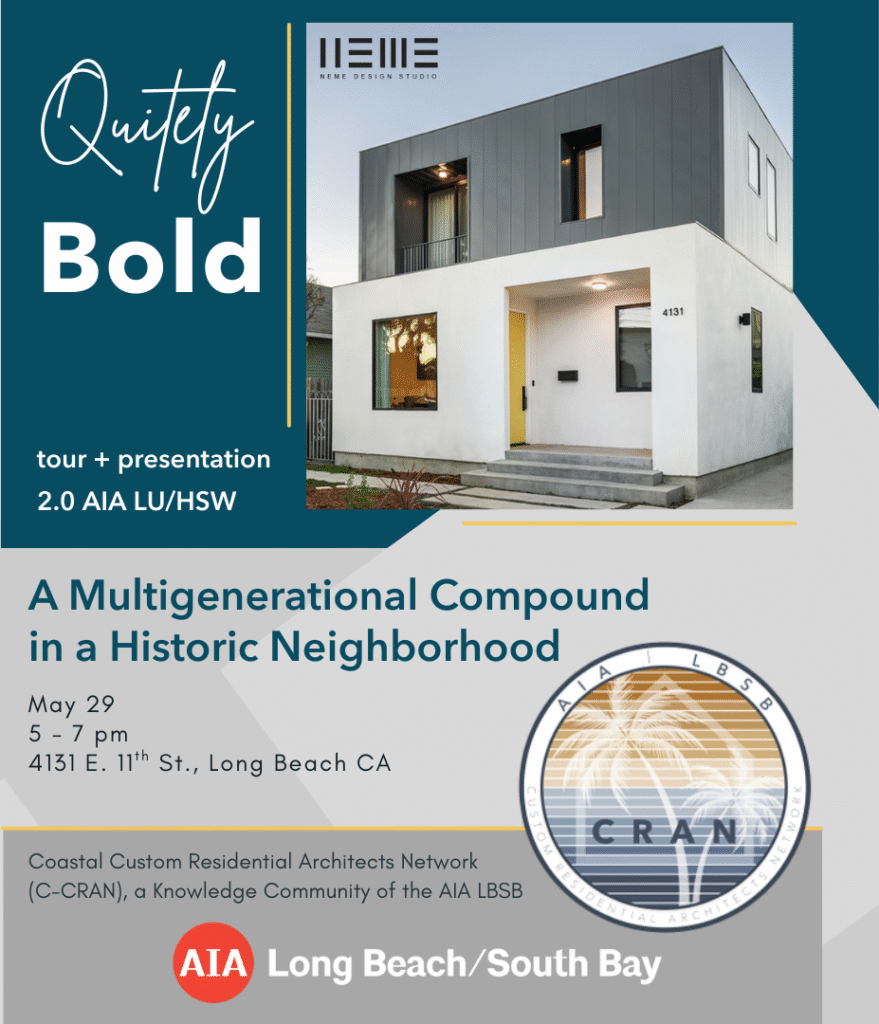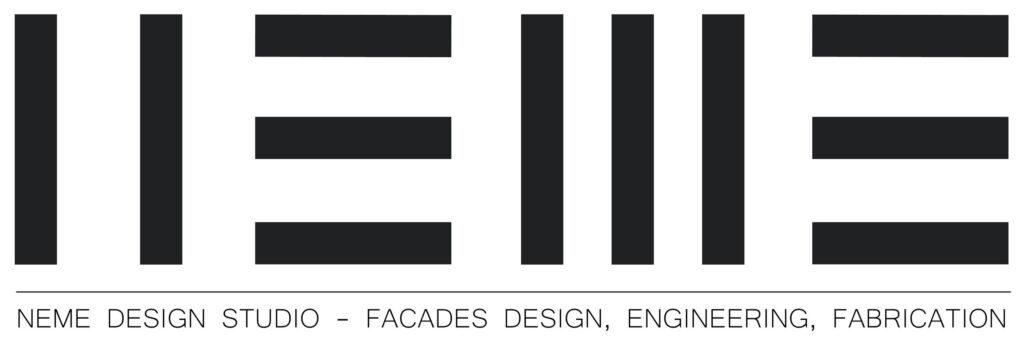
- This event has passed.
QUIETLY BOLD: A Multigenerational Compound in a Historic Neighborhood
May 29, 2025 @ 5:00 pm – 7:00 pm
A Coastal CRAN tour + presentation

Prices increases May 1
2.0 AIA LU/HSW
Description:
This course explores the transformation of a 1929 Spanish bungalow in Long Beach’s Zaferia district into a multigenerational home that balances privacy, shared living, and historical context. Participants will examine how the redesign preserves the architectural integrity of the original structure while incorporating modern interventions inspired by the urban and industrial surroundings. Key topics include designing for multigenerational living, integrating sustainable and cost-conscious strategies, and maintaining a strong connection to community and place. Special emphasis is placed on design decisions that enhance occupant health, safety, and welfare, ensuring long-term comfort, accessibility, and sustainability.
Learning objectives:
- Multigenerational Design Strategies for Health and Accessibility – Analyze how architectural solutions can accommodate multigenerational living while ensuring safety, accessibility, and well-being through features such as universal design, aging-in-place strategies, and shared spaces that support social interaction and mental health.
- Contextual Adaptation and Historic Preservation for Community Welfare – Evaluate how modifications to historic homes can respect original architectural character while enhancing occupant safety, structural integrity, and energy efficiency to improve long-term habitability and resilience.
- Sustainable and Cost-Conscious Material Selections for Occupant Health – Identify material choices and energy-efficient strategies that contribute to indoor air quality, thermal comfort, and low-maintenance durability, thereby enhancing the long-term health and safety of residents.
- Maximizing Natural Light and Space Efficiency for Well-Being – Assess the role of spatial planning, ceiling heights, glazing strategies, and outdoor connections in creating an open, light-filled home that supports circadian rhythms, mental well-being, and improved indoor air quality.
By the end of this course, participants will have gained insights into how thoughtful design can bridge past and future while prioritizing occupant health, safety, and welfare. This approach ensures that evolving family needs, sustainability, and affordability shape a home that remains deeply connected to its community and history.
Presenter:
Becher Neme, AIA, Neme Design Studio
Sponsored by
Coastal CRAN (Custom Residential Architects Network) is a knowledge community of the AIA Long Beach / South Bay



